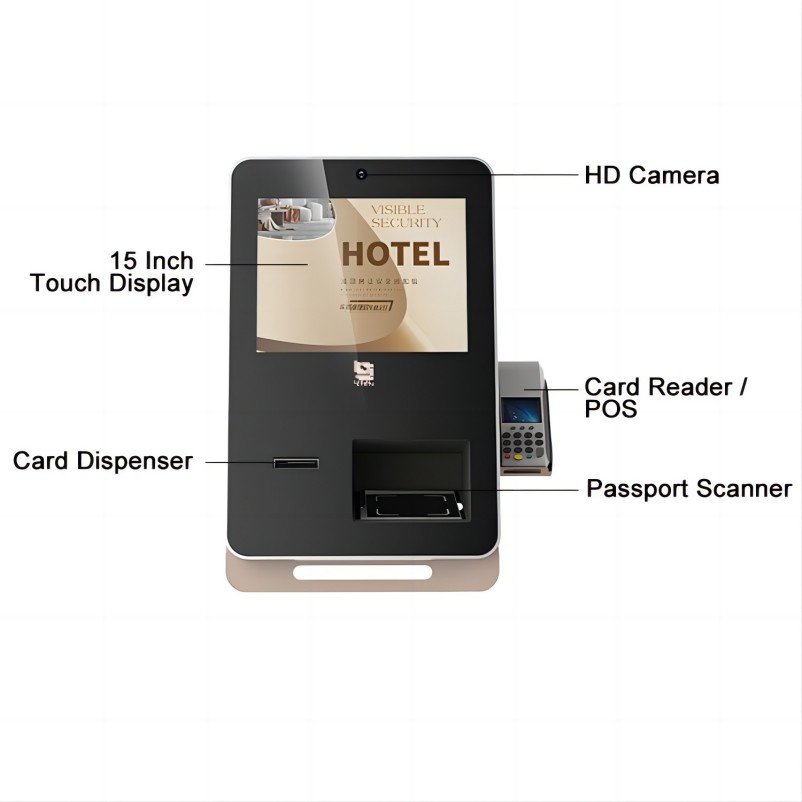Self-service kiosk applications refer to software systems designed to operate on interactive kiosks, enabling users to perform various tasks independently without the need for assistance from service staff. These applications are commonly used in diverse sectors such as retail, banking, healthcare, transportation, and hospitality. They offer functionalities such as information retrieval, transaction processing, appointment scheduling, and form submission.
In retail, for example, self-service kiosks allow customers to place orders, make payments, and print receipts. In healthcare, they facilitate patient check-ins, bill payments, and prescription refills. The primary benefits of self-service kiosk applications include increased operational efficiency, reduced labor costs, enhanced customer experience, and improved accuracy in data collection. By automating routine tasks, these applications help organizations streamline their services, reduce wait times, and provide convenient, 24/7 access to their offerings.

Self-service kiosk applications have significantly transformed the transportation and logistics sectors by offering streamlined, efficient, and user-friendly services. These kiosks cater to a range of needs, enhancing the overall customer experience and operational efficiency.
Ticketing and Check-In: In airports, train stations, and bus terminals, kiosks enable passengers to purchase tickets, check-in, print boarding passes, and choose seats. This reduces long queues and speeds up the boarding process.
Baggage Handling: Self-service kiosks allow passengers to tag and drop off their baggage independently. This feature streamlines the check-in process, reduces wait times, and minimizes the need for counter staff.
Wayfinding and Information: Kiosks provide real-time information on schedules, routes, and delays, helping passengers navigate terminals and plan their journeys more efficiently. Interactive maps and directory services assist in locating gates, platforms, and amenities.
Parcel and Freight Services: In logistics, self-service kiosks facilitate the drop-off and pick-up of parcels. Users can print shipping labels, track shipments, and access locker systems for secure package retrieval at their convenience.
Vehicle Rentals and Parking: Kiosks streamline car rental processes by allowing customers to reserve, pick up, and return vehicles. In parking facilities, kiosks enable ticket issuance, payment processing, and validation, improving traffic flow and reducing congestion.
By integrating these functionalities, self-service kiosk applications enhance operational efficiency, reduce labor costs, and provide convenient, 24/7 access to services, ultimately improving the user experience in transportation and logistics.
Self-service kiosks have revolutionized the catering industry by enhancing efficiency, accuracy, and customer satisfaction. These kiosks allow customers to place orders and make payments without the need for interaction with staff, streamlining the entire ordering process.
Firstly, self-service kiosks reduce wait times by allowing multiple customers to place orders simultaneously. This is especially beneficial during peak hours, ensuring a smoother flow of operations and improving customer experience. Additionally, these kiosks can be equipped with user-friendly interfaces and visual menus, making it easier for customers to customize their orders according to their preferences.
Secondly, self-service kiosks improve order accuracy. Customers input their selections directly, minimizing the risk of miscommunication or human error that can occur when orders are taken manually. This leads to higher customer satisfaction and reduces the incidence of incorrect orders, ultimately saving time and resources.
Moreover, self-service kiosks can be integrated with loyalty programs and upselling features. They can suggest additional items based on the customer’s order history or popular choices, increasing the average transaction value. They also collect valuable data on customer preferences and purchasing patterns, enabling caterers to tailor their offerings and marketing strategies more effectively.
Overall, self-service kiosks in catering services enhance operational efficiency, improve customer satisfaction, and provide valuable business insights, making them an indispensable tool in the modern catering landscape.
Self-service kiosks are becoming increasingly valuable in the field of education and training, providing numerous benefits to both institutions and learners. These kiosks streamline administrative processes, enhance learning experiences, and provide convenient access to resources.
Firstly, self-service kiosks facilitate efficient management of administrative tasks. Students can use kiosks to register for courses, check class schedules, and print transcripts or other important documents. This reduces the workload on administrative staff and minimizes waiting times for students, leading to a more efficient and pleasant administrative experience.
Secondly, kiosks can serve as interactive learning stations. Placed in libraries, student centers, or common areas, they can provide access to educational content such as tutorials, videos, and interactive quizzes. This allows students to engage in self-paced learning and reinforces classroom instruction with supplementary resources.
Additionally, self-service kiosks enhance campus navigation and support. They can provide campus maps, event information, and directions to classrooms, helping new students and visitors orient themselves. Kiosks can also offer career services, such as resume-building tools and job listings, aiding students in their professional development.
Furthermore, self-service kiosks can be used for training purposes in corporate environments. Employees can access training modules, company policies, and performance tracking tools, enabling continuous learning and development.
Overall, self-service kiosks in education and training environments promote efficiency, support self-directed learning, and provide valuable resources, making them a significant asset for educational institutions and corporate training programs.